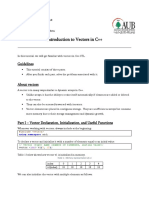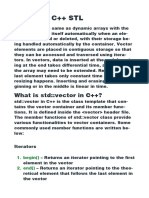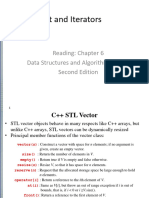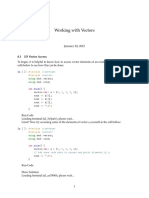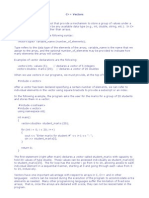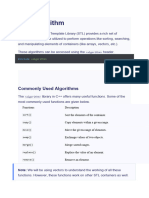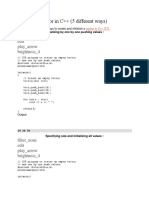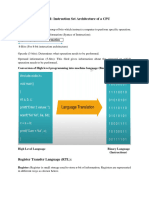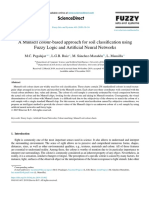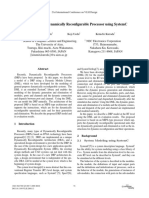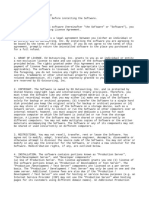0% found this document useful (0 votes)
114 views15 pagesC++ Vectors for Beginners
Vector iterators allow iterating through vectors in C++. They point to memory locations of vector elements similar to pointers. Iterators can be initialized using begin() and end() functions. begin() returns an iterator pointing to the first element, while end() points to the element after the last one. Iterators can then be used to access elements using dereference operator (*) or change iterator position with operators like + and - to iterate sequentially through the vector.
Uploaded by
Monalisa kanungoCopyright
© © All Rights Reserved
We take content rights seriously. If you suspect this is your content, claim it here.
Available Formats
Download as DOCX, PDF, TXT or read online on Scribd
0% found this document useful (0 votes)
114 views15 pagesC++ Vectors for Beginners
Vector iterators allow iterating through vectors in C++. They point to memory locations of vector elements similar to pointers. Iterators can be initialized using begin() and end() functions. begin() returns an iterator pointing to the first element, while end() points to the element after the last one. Iterators can then be used to access elements using dereference operator (*) or change iterator position with operators like + and - to iterate sequentially through the vector.
Uploaded by
Monalisa kanungoCopyright
© © All Rights Reserved
We take content rights seriously. If you suspect this is your content, claim it here.
Available Formats
Download as DOCX, PDF, TXT or read online on Scribd
/ 15






